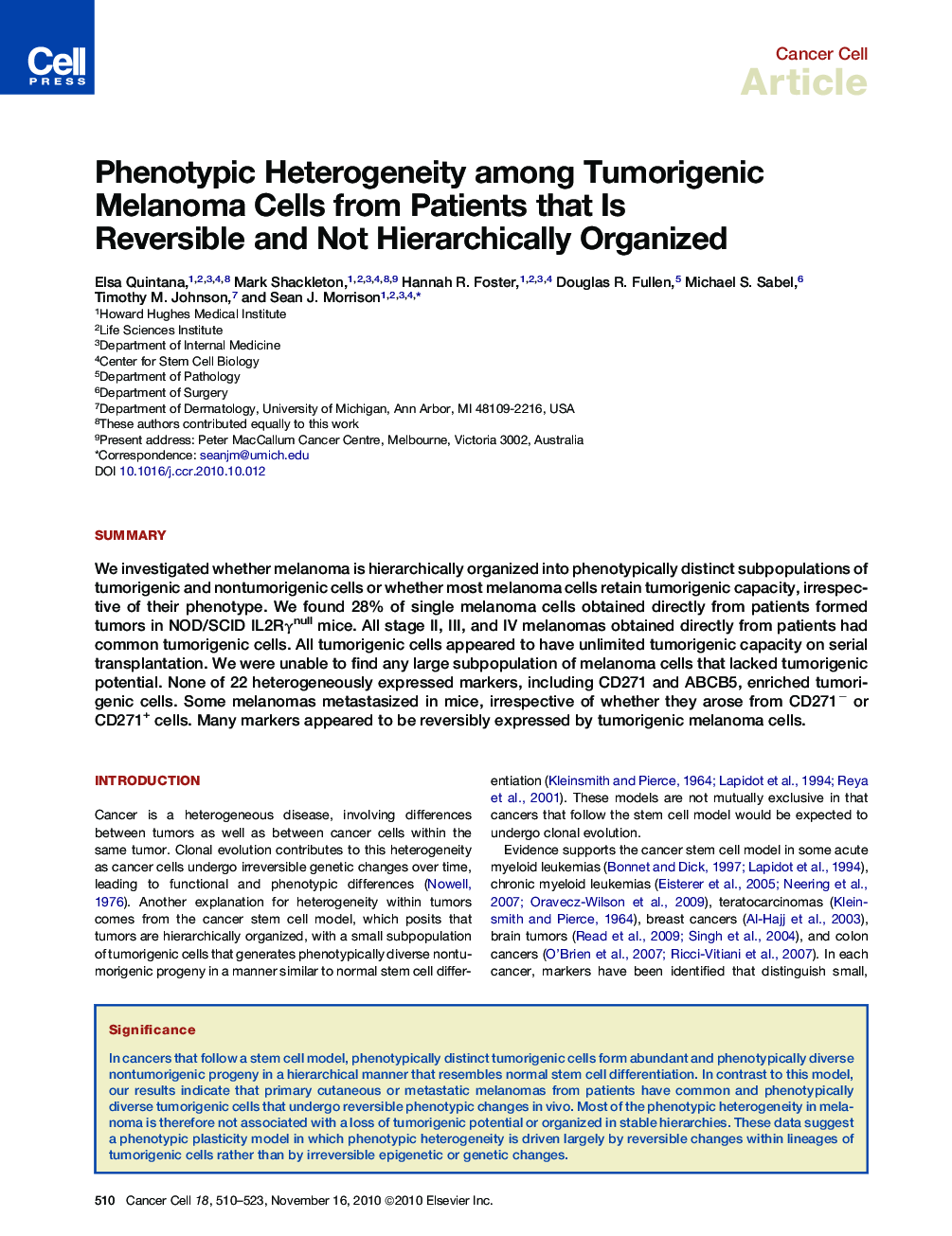| Article ID | Journal | Published Year | Pages | File Type |
|---|---|---|---|---|
| 2107669 | Cancer Cell | 2010 | 14 Pages |
SummaryWe investigated whether melanoma is hierarchically organized into phenotypically distinct subpopulations of tumorigenic and nontumorigenic cells or whether most melanoma cells retain tumorigenic capacity, irrespective of their phenotype. We found 28% of single melanoma cells obtained directly from patients formed tumors in NOD/SCID IL2Rγnull mice. All stage II, III, and IV melanomas obtained directly from patients had common tumorigenic cells. All tumorigenic cells appeared to have unlimited tumorigenic capacity on serial transplantation. We were unable to find any large subpopulation of melanoma cells that lacked tumorigenic potential. None of 22 heterogeneously expressed markers, including CD271 and ABCB5, enriched tumorigenic cells. Some melanomas metastasized in mice, irrespective of whether they arose from CD271− or CD271+ cells. Many markers appeared to be reversibly expressed by tumorigenic melanoma cells.
Graphical AbstractFigure optionsDownload full-size imageDownload high-quality image (187 K)Download as PowerPoint slideHighlights► Tumorigenic cells in melanomas from patients are common and phenotypically diverse ► Irrespective of their phenotype, many melanoma cells recapitulate tumor heterogeneity ► Melanoma cells exhibit phenotypic differences that are not hierarchically organized ► Heterogeneity arises from reversible phenotypic changes among tumorigenic cells
